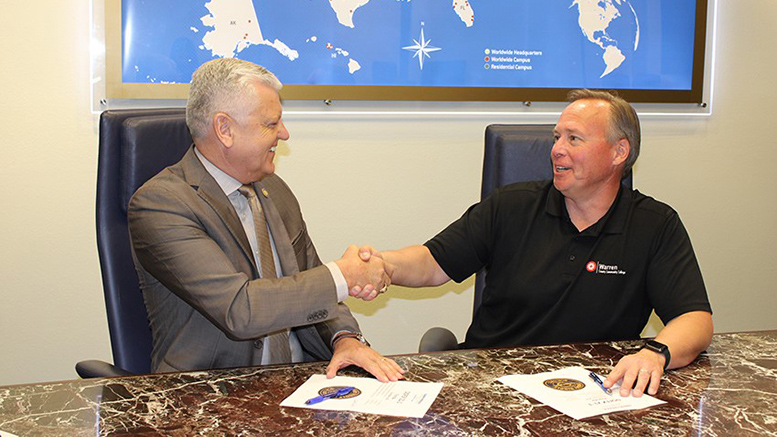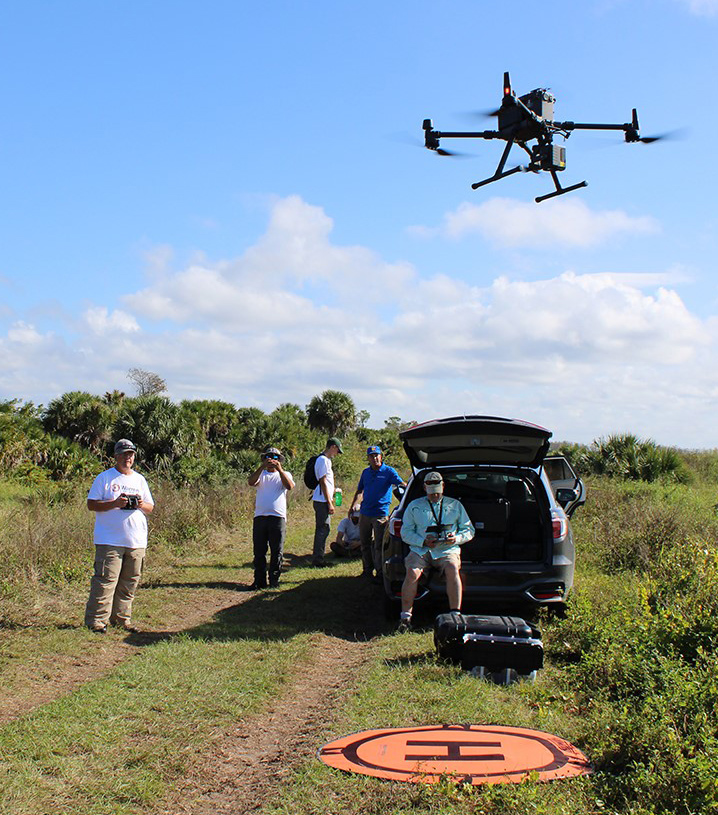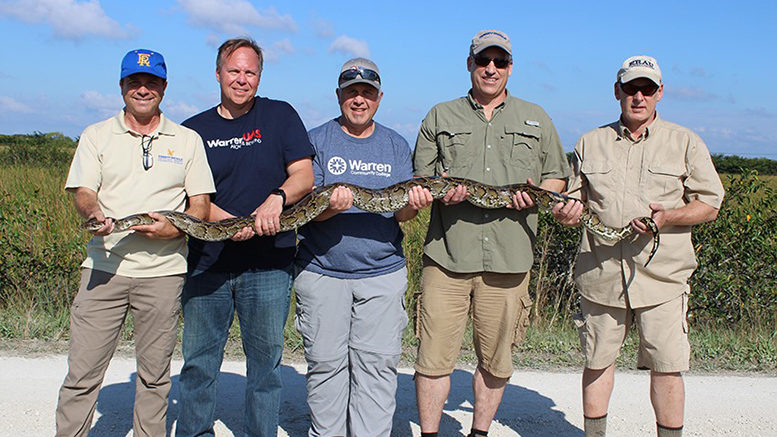In remote areas of south Florida, experts believe there are 300,000 Burmese pythons, massive invasive visitors that are as long as a small car and have wiped out all but a few of the other animals in the areas they inhabit. They are now beginning to consume alligators.
In rural New Jersey 1,300 miles away, students at Warren County Community College (WCCC) are involved in a research project to help solve the problem from the air.
They are using data from drones as part of a broader, unique collaboration with the world’s largest aviation and aerospace university. And as students learn to analyze the data, the skills they develop perhaps can be applied to spot an elusive bear causing trouble in a residential neighborhood, measure algae bloom effects, improve agricultural production or even help first responders save lives in fires or active shooter scenarios by spotting a gun in a crowd.
“The python-hunting drone and camera we are helping to develop could be put to use in a number of other valuable ways,” says WCCC President Will Austin. “Just as importantly, however, to be involved in a project like this is so good for our students, and it wouldn’t have happened without this collaboration.”
Students and faculty from both institutions are analyzing data to determine the effectiveness of using drones and near-infrared cameras to detect the snakes – research that thus far has positive results. Near-infrared light reflects off foliage and other objects, but not as significantly from the snakes. They’ll be studying the potential for using that equipment in a variety of other ways and formally presenting evidence of its effectiveness.
Leveraging resources
Unique in itself, the project is part of a broader, formal collaboration between WCCC and Embry-Riddle Aeronautical University (ERAU), based in Daytona Beach, one of the nation’s top schools for aviation.
The agreement will not only let students from WCCC’s nationally known drone program seamlessly enroll at ERAU to complete their bachelor’s degree, it allows the schools to collaborate on research and grants, share technology and faculty, and work together on projects like this one.
“We have a lot of cooperative arrangements with four-year colleges, but this is different,” Austin says. “Embry-Riddle is an elite university in the field of aviation and aerospace, and for us to partner with their program is absolutely an honor. Based on our history together already, this was a natural step forward for both schools.”

Austin says he believes that, beyond developing a pathway for students, the collaboration came about because both institutions were interested in “expanding knowledge and capacity.”
WCCC’s drone program has grown from three students at its inception five years ago, to currently 40. And it is projected to enroll as many as 200 once the new, roughly 4000-square-foot center for aeronautics and robotics and 1000-square-foot advanced manufacturing maker labs are completed, projected for fall 2022.
The facilities will train students in the design, assembly and operation of drones costing from $100 to $100,000. They also will increasingly offer instruction about the development of related robots and other types of remotely controlled robotic vehicles and the “business of automated mobility,” which includes the evolution of drones as human and cargo transportation vehicles, which are used around the world and awaiting approval for use in the U.S.
Warren’s program also specializes in precision agriculture, an emerging field that uses data collected by drones to improve production, a logical field of study for the college given its location in the midst of farmland.
Growth potential
Joe Cerreta, an associate professor at ERAU involved in the collaborative effort, notes that Austin, who graduated from ERAU, had maintained a connection between the two campuses and sought ERAU’s help in acquiring operator certification for some of its programs in a firm commitment to building his college’s drone instruction. Among other things, it now offers the industry’s top certification for drone operation.
“He is such a hands-on leader and sees the value of this field, and the way it can be used to solve so many problems and improve lives,” Cerreta says.
Austin says ERAU officials had the expertise and the programming, and he could see how the connection to WCCC would benefit them. He says initially the two colleges shared research about ways drones could help to enhance public safety, surveying and agricultural production. They also began to establish pathways for WCCC students to transfer to ERAU, which has campuses in Florida and Arizona and an online program.
Related article: Homing in on drones
The first student will transfer this year between the institutions, but both Cerreta and Austin say they expect the number to grow quickly as they continue to work out some differences in course structure and credit.
“The exchange of faculty expertise can benefit us in a number of ways. It gives our students and us access to a range of proficiency and currency to broaden student knowledge,” says Austin, noting that he also envisions graduate students at ERAU becoming instructors on his campus. Finding faculty in the fields the college aims to address has been a challenge in developing the program, he notes.
Sharing technology
One recent gathering for faculty from both schools included sessions about advanced technology, including work with WCCC’s sophisticated robotic dog, “Spot.”

“That is a good example of the way expensive equipment (The Spot enterprise cost about $200,000) can be shared and explored by both campuses in a field where equipment and software is expensive and changes rapidly,” Austin says.
Meanwhile, ERAU has access to and experience with industry-standard photogrammetry software for geographic information system mapping, which links all sorts of data to maps and is used widely in most major industries and dovetails with drone use, Cerreta says. It is sharing the software and its knowledge with WCCC along with upgrades or new applications.
“It is valuable to have this partnership considering the changing nature of high tech,” Austin says. “It’s been estimated by Stanford University that the AI knowledge base doubles every three and a half months compared to that for computers, which doubles every two years, so it is hard for any one institution to keep up.”
Seeking additional college partners
For that reason, in part, Austin hopes other colleges will join the collaboration to allow for additional avenues for the flow of information and the sharing of resources.
The two colleges are applying for grant funding to support some of the programs they envision. Austin says the process benefits from two institutions having access to separate funding that could be used for collaborative work.
The arrangement also will naturally lead to joint work in research, like the one developing from the project with pythons in Florida.

